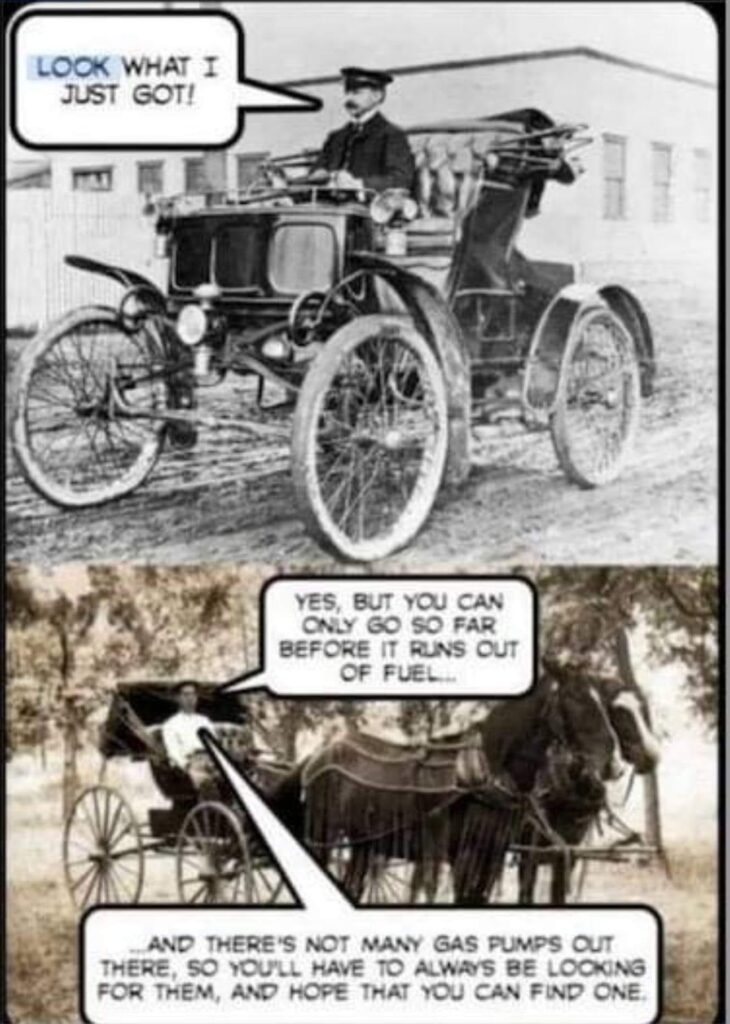Henry Ford brought his vision for an affordable mass produced car for everyone all those years ago. The Ford Model T was the biggest success story of it’s age. Bringing the cost down, and making cars accessible to everyone opened up new opportunities, like the petroleum distribution network.
Critique of “Monster” Cars
Back in the time of the Ford Model T, the enemy was the manufacturing process. Each car was completed then the next one started. The production line fixed that. Some may argue that America’s love for large vehicles is a symbol of freedom and power, but Ford CEO Jim Farley sees it as one major obstacle to electric vehicle (EV) adoption. He believes that the weight of these “monster vehicles” is the enemy of EVs, making them less efficient and more expensive.
Many of the challenges Henry Ford faced are repeating themselves. Affordability, fuel distribution, production costs and changes in supply chains were all overcome by Henry. Today’s solutions will be different for some, but might be remarkably similar for others. After all, horse food was easy and convenient, much like fuel is today. Some may say horse food was more convenient. If anything, electricity is easier to deliver compared to having to refine, transport and deliver fuel. With electricity you don’t even need to visit a station, you can just plug in at home, and you can even produce your own electricity right on your very own roof.
Need for Smaller, More Affordable EVs
Affordable and smaller EVs are the answer to one of today’s biggest issues. They are crucial for widespread adoption, and you deserve options that fit your budget and needs. As Farley puts it, getting back in love with smaller vehicles is super important for society and EV adoption.
This is especially true when you consider the economics of large EVs. With batteries costing upwards of $50,000, it’s no wonder that companies like Ford are struggling to make a profit on their electric offerings. By focusing on smaller, more affordable EVs, Ford aims to create a profitable and accessible option for the masses, with a target price of $30,000. This could be a game-changer for the industry and for your wallet.


“Skunk Works” Team’s Mission
Now, you’re probably wondering how Ford plans to make affordable EVs a reality. The answer lies in its “Skunk Works” team, led by Alan Clarke, former chief engineer for the Tesla Model Y and Model 3. This team is dedicated to measuring wattage and usage for every system in the vehicle to get the battery as small as possible, ultimately reducing weight and complexity.
Goal of a $30,000 Car within 2.5 Years
Teams at Ford are working tirelessly to achieve an ambitious goal: to release a profitable $30,000 EV within the next 2.5 years. This car is intended to compete with the likes of Tesla’s rumored “Model 2” and low-cost offerings from Chinese automakers like BYD. Could this be the Ford Model T of today? I’m sure the clever marketing people at Ford will be able to come up with a great name inspired by the Model T.
LowCost innovations are crucial to achieving this goal. By leveraging advanced materials, additive manufacturing, and new body structures, Ford aims to significantly reduce the weight of its EVs. This, in turn, will lead to smaller batteries, lower production costs, and a more affordable price tag for you, the consumer. With Ford “betting the company” on its “Skunk Works” team, you can expect significant progress in the coming years.
Can John Farley channel the spirit of Henry Ford and replicate the success story of the Ford Model T? Time will tell.


